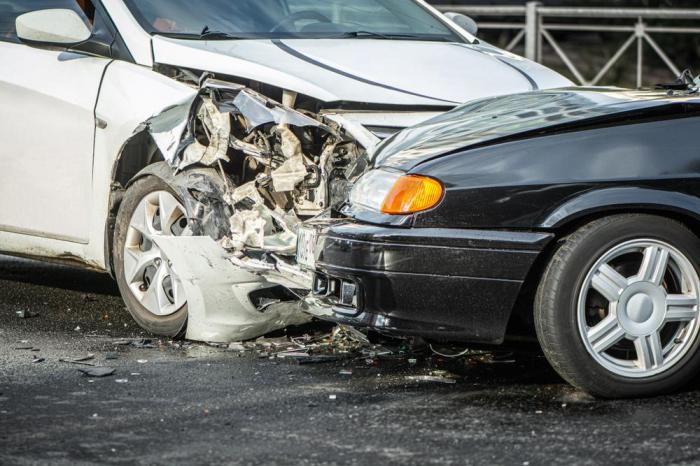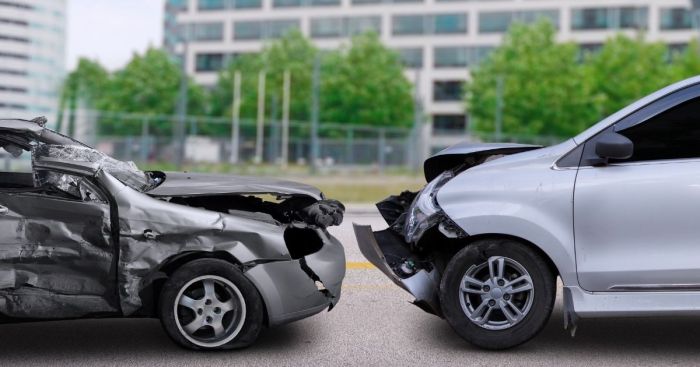What is the most common collision between cars and motorcycles? A rear-end collision is the most common type of collision between cars and motorcycles. This type of collision occurs when a car strikes the rear of a motorcycle, often at an intersection or when the motorcycle is stopped at a traffic light.
Rear-end collisions can be caused by a variety of factors, including driver inattention, tailgating, and speeding. They can also be caused by road conditions, such as slippery pavement or poor visibility. Rear-end collisions can be very dangerous, as they can result in serious injuries or even death.
Types of Car-Motorcycle Collisions
Car-motorcycle collisions occur in various forms, each with unique characteristics and consequences. The most prevalent types include:
- Head-on collisions:Occur when the front of a car collides directly with the front of a motorcycle. These are often severe due to the high impact forces involved.
- Sideswipe collisions:Happen when the side of a car strikes the side of a motorcycle. These can result in serious injuries to the motorcyclist, who may be thrown from the bike.
- Rear-end collisions:Take place when a car collides with the rear of a motorcycle. These can cause significant damage to the motorcycle and injuries to the rider.
- Left-turn collisions:Occur when a car makes a left turn in front of a motorcycle. These are often caused by the car driver failing to see the motorcycle.
- Right-angle collisions:Happen when a car and a motorcycle collide at an intersection. These can be particularly dangerous for motorcyclists, who may be struck by the car’s front or side.
Causes of Car-Motorcycle Collisions

Car-motorcycle collisions can be attributed to a combination of factors, including:
- Driver behavior:Inattention, speeding, reckless driving, and driving under the influence of alcohol or drugs are major contributors to car-motorcycle collisions.
- Road conditions:Poor road conditions, such as potholes, debris, and slippery surfaces, can increase the risk of collisions.
- Vehicle design:Motorcycles are inherently more vulnerable to collisions due to their smaller size and lack of protective features.
- Environmental factors:Poor visibility, rain, and darkness can make it more difficult for drivers to see motorcycles.
- Other factors:Inexperience, fatigue, and distracted driving can also contribute to car-motorcycle collisions.
Consequences of Car-Motorcycle Collisions

Car-motorcycle collisions can have devastating consequences, including:
- Injuries:Motorcyclists are at a high risk of severe injuries due to the lack of protection around them. Injuries may include broken bones, head injuries, and spinal cord damage.
- Fatalities:Car-motorcycle collisions are the leading cause of death for motorcyclists. The high impact forces involved in these collisions can be fatal.
- Property damage:Both cars and motorcycles can sustain significant damage in collisions, leading to costly repairs or replacement.
Prevention of Car-Motorcycle Collisions

Preventing car-motorcycle collisions requires a multi-faceted approach, involving:
- Driver education:Educating drivers about the risks of car-motorcycle collisions and how to avoid them.
- Motorcycle safety awareness:Raising awareness among motorcyclists about the importance of wearing protective gear and riding safely.
- Road improvements:Improving road conditions and designing intersections to reduce the risk of collisions.
- Vehicle safety features:Incorporating safety features into cars and motorcycles, such as anti-lock brakes and airbags.
- Law enforcement:Enforcing traffic laws and penalties for reckless driving.
Data and Statistics
| Year | Number of Collisions | Number of Fatalities |
|---|---|---|
| 2018 | 5,286 | 4,976 |
| 2019 | 5,468 | 5,014 |
| 2020 | 4,675 | 4,255 |
Legal Considerations
Car-motorcycle collisions often involve complex legal issues, including:
- Liability:Determining who is responsible for the collision and the extent of their liability.
- Insurance coverage:Identifying the insurance policies that apply and the coverage available to the parties involved.
- Fault determination:Establishing the fault of the drivers involved in the collision.
- Legal representation:Seeking legal advice and representation to protect the rights of the parties involved.
Safety Measures: What Is The Most Common Collision Between Cars And Motorcycles
Implementing safety measures can significantly reduce the risk of car-motorcycle collisions:
- Technological advancements:Developing and deploying advanced safety technologies, such as lane departure warnings and automatic emergency braking.
- Educational initiatives:Educating drivers and motorcyclists about safe driving practices and the importance of wearing protective gear.
- Infrastructure improvements:Modifying roads and intersections to enhance visibility and reduce the risk of collisions.
- Public awareness campaigns:Raising awareness among the general public about the dangers of car-motorcycle collisions.
Case Studies

Analyzing real-world case studies of car-motorcycle collisions can provide valuable insights into the causes and consequences of these incidents:
- Case Study 1:A head-on collision between a car and a motorcycle resulted in the death of the motorcyclist. The investigation revealed that the car driver was speeding and under the influence of alcohol.
- Case Study 2:A left-turn collision between a car and a motorcycle caused severe injuries to the motorcyclist. The car driver failed to see the motorcycle while making a left turn.
Future Trends
Emerging trends and technologies may impact the frequency and severity of car-motorcycle collisions:
- Autonomous vehicles:The development of autonomous vehicles has the potential to reduce the risk of collisions caused by human error.
- Connected vehicles:Vehicles equipped with connected technology can communicate with each other and with infrastructure, improving situational awareness and reducing the risk of collisions.
- Advanced safety features:Ongoing advancements in safety features, such as lane departure warnings and automatic emergency braking, are expected to further reduce the risk of collisions.
FAQ Section
What are the most common causes of rear-end collisions between cars and motorcycles?
The most common causes of rear-end collisions between cars and motorcycles are driver inattention, tailgating, and speeding.
What are the most common injuries sustained in rear-end collisions between cars and motorcycles?
The most common injuries sustained in rear-end collisions between cars and motorcycles are head injuries, neck injuries, and back injuries.
What can drivers do to prevent rear-end collisions between cars and motorcycles?
Drivers can prevent rear-end collisions between cars and motorcycles by paying attention to the road, maintaining a safe following distance, and obeying the speed limit.